The Everest Base Camp Trek, including the ascent to Kala Patthar, spans 13 days and offers trekkers a unique blend of natural beauty and cultural richness. Starting in Kathmandu, adventurers will navigate through picturesque landscapes and welcoming Sherpa villages before reaching the iconic viewpoint. With knowledgeable guides and comfortable accommodations, the trek is designed to accommodate various skill levels. However, understanding the journey’s intricacies can make all the difference in preparation. What should trekkers consider to ensure a smooth and enjoyable experience amidst the towering peaks?
Key Points
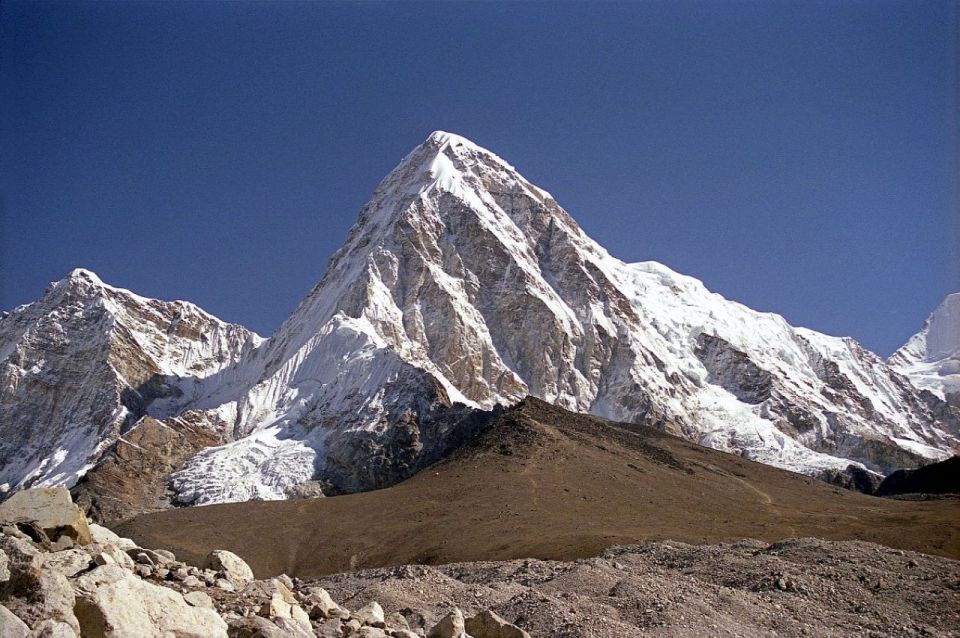
- The Everest Base Camp trek lasts 13 days, starting at K₨ 40,510 per person, suitable for all skill levels.
- The itinerary includes major highlights like Namche Bazaar, Tengboche, and a rest day for acclimatization.
- Accommodation is provided in lodges and hotels, with meals included during the trek, enhancing convenience.
- A guide and porter are included to assist trekkers, ensuring a focused experience on scenery and culture.
- Book at least one month in advance and be prepared for potential weather delays affecting flight schedules.
It's also worth checking out some other tours and experiences nearby.
Trek Overview and Pricing
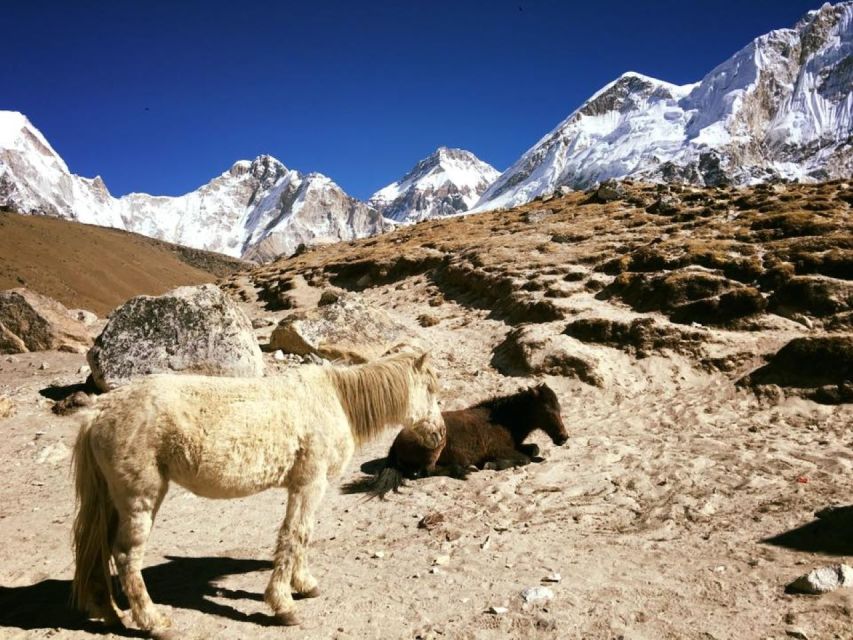
The Everest Base Camp trek, a thrilling adventure that typically spans 13 days, offers breathtaking views and an unforgettable experience, starting from K₨40,510 per person.
This trek caters to both seasoned adventurers and newcomers, making it an ideal choice for anyone eager to explore the majestic Himalayas.
Travelers can reserve their spot with the convenience of ‘pay later‘ options, allowing them to secure their adventure without immediate payment.
Plus, they enjoy the flexibility of free cancellation up to 24 hours in advance, ensuring peace of mind.
It’s essential to check availability for starting dates, as this trek is popular and can fill up quickly, especially during peak seasons.
Detailed Itinerary
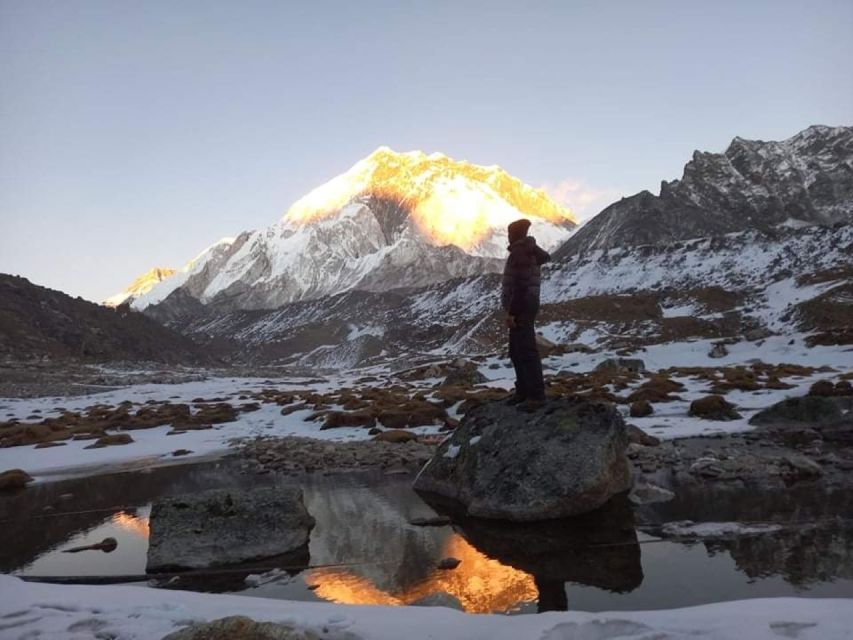
Embarking on the Everest Base Camp trek unfolds an exciting 13-day journey filled with stunning landscapes and cultural experiences. Each day offers new challenges and breathtaking views, making it an unforgettable adventure.
Here’s a glimpse of the detailed itinerary:
-
Day 1: Arrive in Kathmandu and transfer to hotel.
-
Day 2: Fly to Lukla, then trek to Phakding (5hr).
-
Day 3: Trek to Namche Bazaar (5hr).
-
Day 4: Rest day in Namche, hike to Everest View Hotel.
-
Day 5: Trek to Tengboche (5hr).
As trekkers continue, they’ll face various altitudes and terrains, ensuring a rich experience that combines nature’s beauty with cultural insights.
Inclusions During Trek
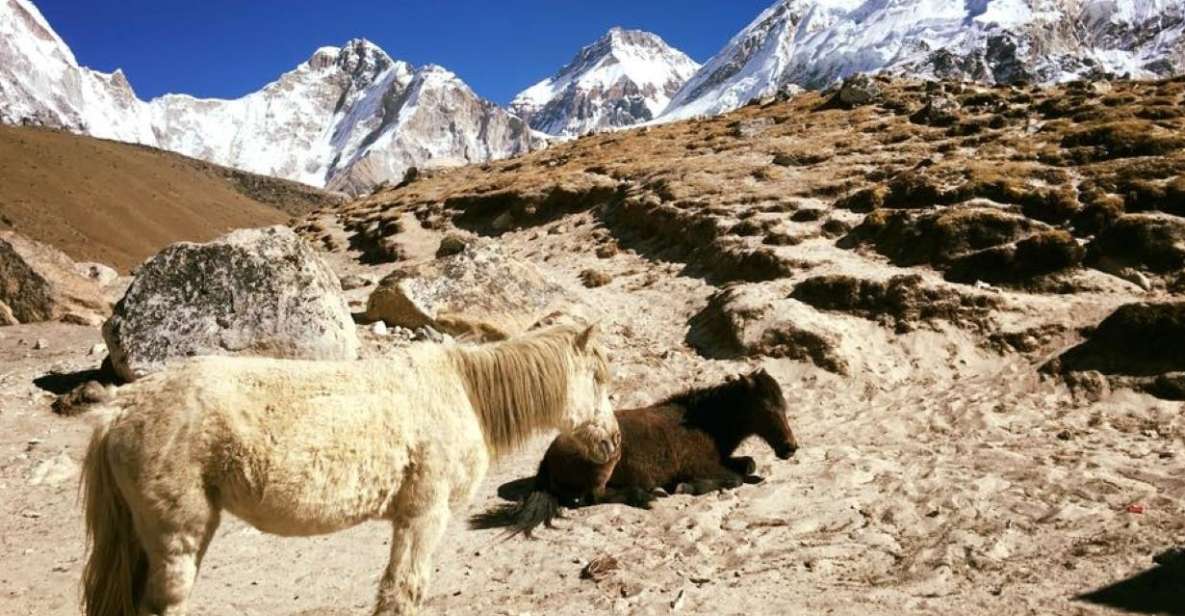
Trekkers can expect a comprehensive package of inclusions during the Everest Base Camp trek, ensuring a comfortable and memorable experience. This carefully curated package covers essential aspects of the journey, allowing trekkers to focus on the breathtaking scenery and rich culture of the Himalayas.
| Inclusions | Description | Notes |
|---|---|---|
| Accommodation | 2 nights in Kathmandu, 10 nights in lodges | Twin sharing basis |
| Meals | Breakfast, lunch, and dinner during trek | Freshly prepared local cuisine |
| Domestic Flights | Return flights from Lukla to Kathmandu | Included in the package |
| Guide and Porter | Experienced guide and 1 porter for every 2 trekkers | Essential for assistance |
With these inclusions, trekkers can truly enjoy the adventure without the hassle of logistics.
Exclusions and Extra Costs
While the trek includes many essential services, there are several exclusions and extra costs that participants should be aware of to budget effectively. These expenses can add up, so it’s important to plan accordingly.
Here are some key items to consider:
-
International airfare and airport departure tax
-
Lunch and dinner in Kathmandu
-
Extra baggage fee for Lukla flights (Rs 100 per kg over 12 kg)
-
Personal expenses, hygiene items, and alcoholic drinks
-
Tips for guide and porter based on satisfaction
Plus, costs for services like hot showers or laundry during the trek can also arise. Being informed about these exclusions will help trekkers manage their finances throughout the journey.
Accommodations Provided
The trek offers comfortable accommodations, including two nights in a hotel in Kathmandu and ten nights in cozy lodges or tea houses along the route. These lodgings provide a warm and welcoming atmosphere, perfect for resting after a day of trekking.
| Type of Accommodation | Location |
|---|---|
| Hotel | Kathmandu |
| Lodge/Tea House | Phakding |
| Lodge/Tea House | Namche Bazaar |
| Lodge/Tea House | Dingboche |
Most places offer twin-sharing options, ensuring trekkers can unwind with a friend or fellow adventurer. Plus, meals are included during the trek, making planning easier. The accommodations enhance the trekking experience, blending comfort with the adventure of the Himalayas.
Important Travel Notes
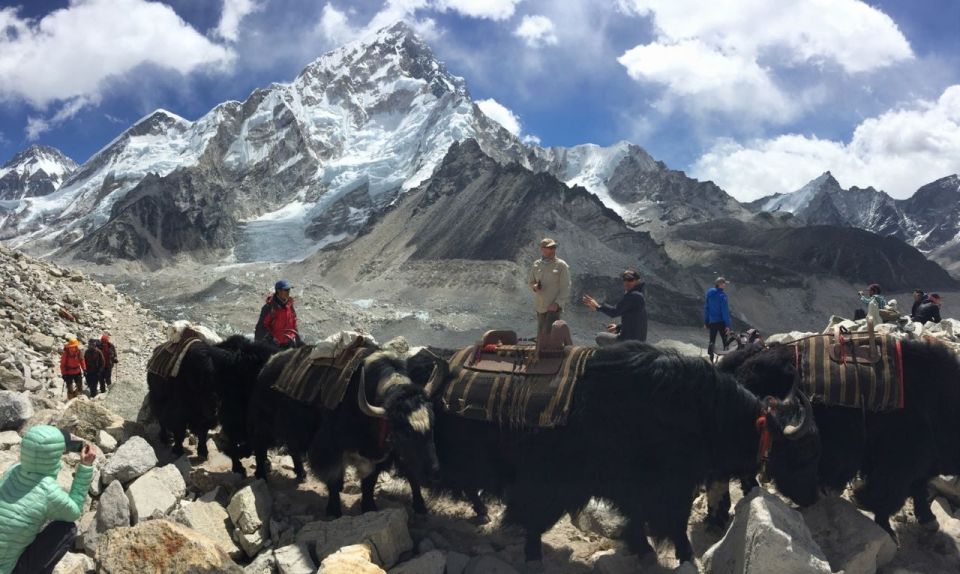
What should travelers keep in mind before embarking on the Everest Base Camp trek? Preparation is key for a successful journey. Here are some important travel notes to consider:
-
Book at least one month in advance: Securing spots early helps avoid last-minute issues.
-
Expect flight delays: Weather can affect flights to Lukla, possibly diverting to Ramechaap Airport.
-
Assess physical fitness: This trek isn’t suitable for pregnant women or those with mobility impairments.
-
Check availability: Always confirm your spot before booking.
-
Be flexible: Unpredictable weather may lead to changes in the itinerary.
Keeping these notes in mind will enhance the trekking experience and ensure a smooth adventure in the majestic Himalayas.
Packing Essentials
Packing wisely can significantly impact a trekker’s comfort and enjoyment on the Everest Base Camp journey, so it’s important to know what to bring along.
Essential items include a sturdy pair of trekking boots, moisture-wicking clothing, and thermal layers for warmth. A good-quality down jacket and a waterproof shell are crucial for unpredictable weather.
Trekking poles can provide stability on challenging terrain, while a comfortable backpack ensures ease of carrying essentials. Don’t forget a sleeping bag rated for low temperatures, a first aid kit, and personal hygiene items.
Plus, trekkers should pack snacks and a reusable water bottle to stay energized and hydrated throughout the trek. Proper packing makes all the difference in this adventure!
Adventure Preparations
Preparing for the Everest Base Camp trek involves careful planning and consideration to ensure a safe and enjoyable experience. Adventurers should focus on several key aspects before setting off on this iconic journey:
-
Physical Fitness: Build stamina through regular cardio and strength training.
-
Gear Check: Ensure all equipment, like trekking boots and jackets, are reliable and comfortable.
-
Travel Insurance: Get comprehensive coverage for emergencies and trip cancellations.
-
Acclimatization Awareness: Understand altitude sickness and how to recognize its symptoms.
-
Local Culture: Familiarize yourself with Sherpa customs and etiquette to enhance your experience.
Here's a few more nearby tours and experiences we think you'll like.
Frequently Asked Questions
What Is the Best Time to Undertake the Trek?
The best time for trekking in the Himalayas is typically spring (March to May) and autumn (September to November). During these months, the weather’s milder, visibility’s clearer, and trails are less crowded, enhancing the experience.
Are There Age Restrictions for Participants?
While there aren’t strict age restrictions, participants should be physically fit. Typically, trekkers range from teens to seniors. It’s wise for older individuals to consult a doctor before embarking on such an adventurous journey.
What Fitness Level Is Required for the Trek?
For this trek, participants need moderate fitness. They should be comfortable walking several hours daily on uneven terrain. Regular cardio and strength training help build endurance, making the trek enjoyable and manageable for everyone involved.
Can I Bring My Own Trekking Gear?
He can absolutely bring his own trekking gear. Many trekkers prefer using personal equipment for comfort and fit. However, he should ensure that it meets the trek’s requirements and is suitable for the terrain.
Is Travel Insurance Necessary for This Trek?
When considering a trek, it’s wise for travelers to have insurance. It covers unexpected emergencies, cancellations, or accidents. Most trekkers find peace of mind knowing they’re protected, ensuring a smoother adventure overall.
Not for you? Here's more of our most recent tour reviews happening neaby
- 15 Days Badimalika Tour in Nepal
- Nar Phu Valley Trek
- Kanchenjunga Trek (North & South Base Camp) – 22 Days
- Everest Base Camp Trek
- Discover Nepal 10-Days Sightseeing Tour
- Langtang Valley Trek Nepal.
- Mera Peak Climbing – 23 Days
- 10 Days Nepal and Bhutan Cultural Tour
- Kathmandu Valley 6-Day Cultural Tour and Trekking
- From Kathmandu: 13 Day Poon Hill & Annapurna Base Camp Trek
- Casino Tour in Kathmandu
- Langtang Valley Trek – 10 Days
- Everest High Pass Trek – Nepal
- Kathmandu: Everest Base Camp Kala Patthar 15-Day Trek
- Nepal Spiritual Laughing 14 Day Trekking Program
Recap
To sum it up, the Everest Base Camp Trek, culminating at Kala Patthar, promises an unforgettable journey filled with stunning vistas and rich cultural experiences.
With a well-structured itinerary, experienced guides, and comfortable accommodations, trekkers of all skill levels can embrace the adventure with confidence.
As they prepare for this incredible trek, they’ll not only witness the majesty of the Himalayas but also create lasting memories that will inspire future explorations.
Ready to take the plunge? The adventure awaits!
